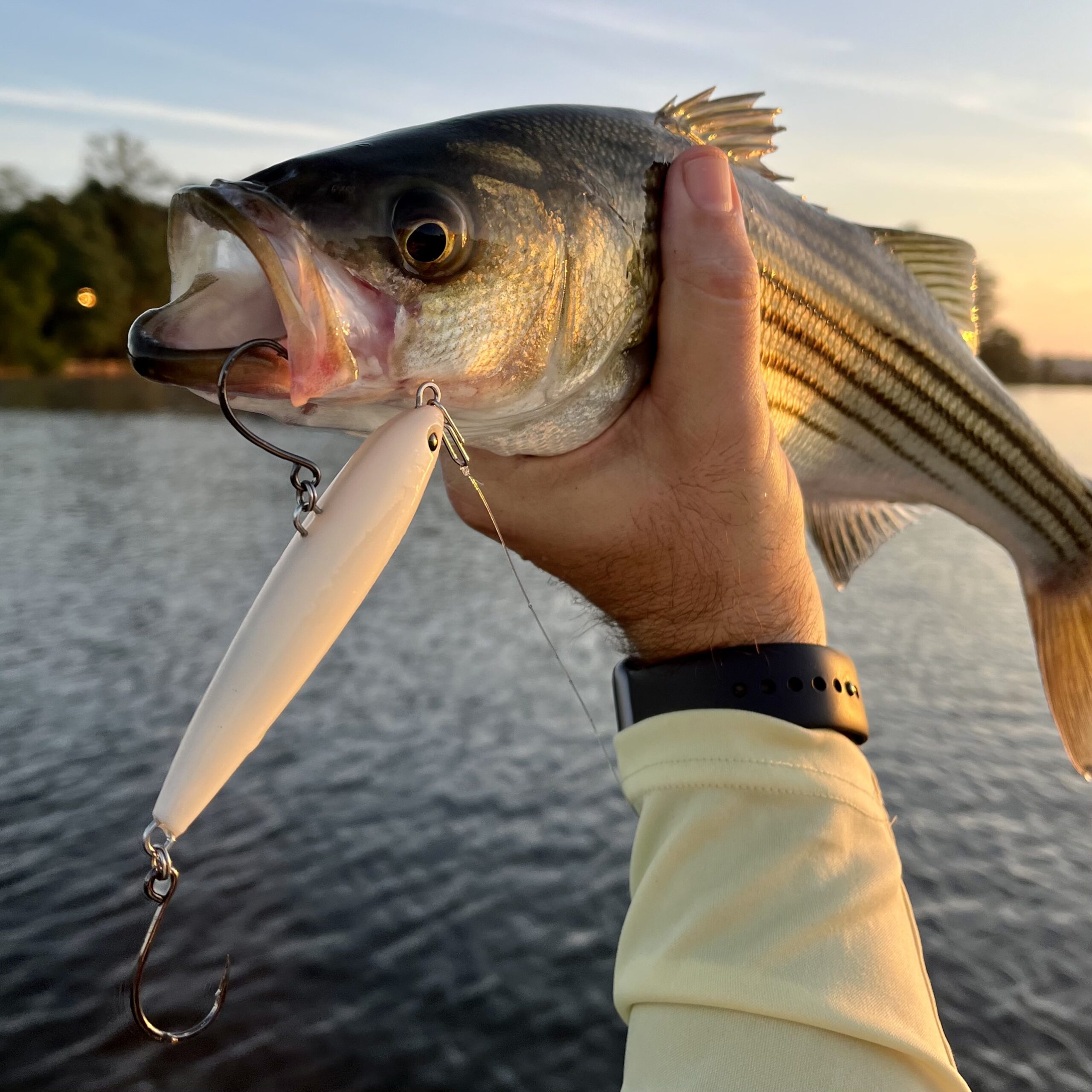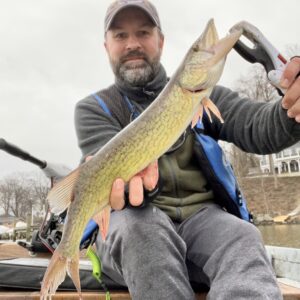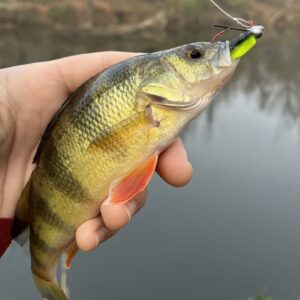If you chase the striped bass bite in the Chesapeake’s tributary rivers then you know, well and good, how much a few days can impact the location and attitude of these precious fish. Heck, a couple hours can make the difference, let alone 24 to 72. But there are signs that can help point you in the right direction when on the hunt. Look for birds, oily slicks of water, pods of baitfish flickering like sparkles on the the surface, or fish breaking near shoreline and sandy points. There’s going to be fish of varying size nearby or below—and hopefully they’re willing to bite. Sometimes they bite with abandon; but other times they seem to have lockjaw. Such is the case when the summer season begins it’s transition to fall; when air and water temps start a mercury migration south to the mid-70s Fahrenheit. Some days are simply on and those in between are maddeningly off.
I find that the bite is best at dawn. I start with topwater lures, either a Shimano ColtSniper Walk or a Stillwater Smack-It, Jr. and alternate until the fish tell me which they prefer. Once the sun kills the topwater bite and the fish prefer cruising deeper and deeper water as the sun inches higher and higher, I’ll switch to searching flats and dropoffs with jerkbaits like the Rapala Shadow Rap Shad or X-Rap. And hopefully, I’ll continue finding the stripers. On a couple early-a.m. outings this week, I both did and didn’t.

On a Saturday morning, the Severn River exhibited calm and seemingly perfect conditions—some mild cloud cover, a whisper of a breeze, and a Full Moon tidal cycle that began at high slack (1.5′) at 6:30 a.m., then ebbed down to 0.8′ by the time I came off the water at 10:30 a.m. The fishing was pretty good. I played the pattern described above by first seeking signs of life on the water, then throwing my arsenal of baits at the fish. The topwater bite was consistent with quality schoolie stripers from 17 to 20″ hitting the walking ColtSniper. After the topwater bite cooled off, I tried the southside of sandbars and points, plying the water with the jerkbaits and even paddletails rigged on 3/8oz jigheads, but couldn’t connect on anything. It seemed the hot action was at dawn and that was that. Regardless, the fishing was worthwhile and fun.

The next trip on the river would be five days later…and later in the morning. An 8 a.m. dock departure meant the sun was already more than four fingers above the horizon. Topwater bite be damned. This made it especially important to hunt for signs of life swirling above and atop the water. A quick run to Round Bay, the widest expanse of river in the Severn, saw a few birds above and plenty of bait shimmering on the surface (plus tons of jellies!), but no breaking fish worth chasing. Running downriver to the Route 50 and Naval Academy bridges saw a bit more action in the air and down below, particularly at the Naval Academy bridge concrete pilings. Large swaths of arches colored the sonar screen. Hovering at the 15–20′ depth, a completely different tactic was in order…jigging.
I rigged a 3/4oz Coach Jigheads skirted jig tipped with a chartreuse BKD and pitched it to the bottom of the river, then snap-jigged it back up repeatedly. Surely this would get a thumping hit. But all was for naught. The fish would not bite. This went on and around the bridge pilings for a solid half-hour with no hookups to speak of. The fishing gods were laughing. An abundance of fish, yet nary a bite. They had lockjaw. And then it hit me. By the time I made way to the bridge, the tide was nearing the end of its flood cycle and approaching slack. There was essentially no wind to speak of. And on the dead drift around the bridge, there was hardly any current moving the boat. Ah, no moving water. And that’s key. Fish love current, love moving water. And there was none (or very, very little). I think that’s what shut the bite down this morning. Lesson learned.
But ultimately, you never know if the fish will bite or not unless you’re on the water…period. Hit or miss, fishing is a sport that offers much more than catching. Putting the puzzle together can be fun and frustrating. The game-planning is a mental exercise abated by nature’s serenity. And if you’re lucky enough to enjoy this sport with a buddy or two, the camaraderie will melt any angst if the fish don’t bite. See y’all on the water again, real soon!





